Dilara Gokay
Learning from Streaming Video with Orthogonal Gradients
Apr 02, 2025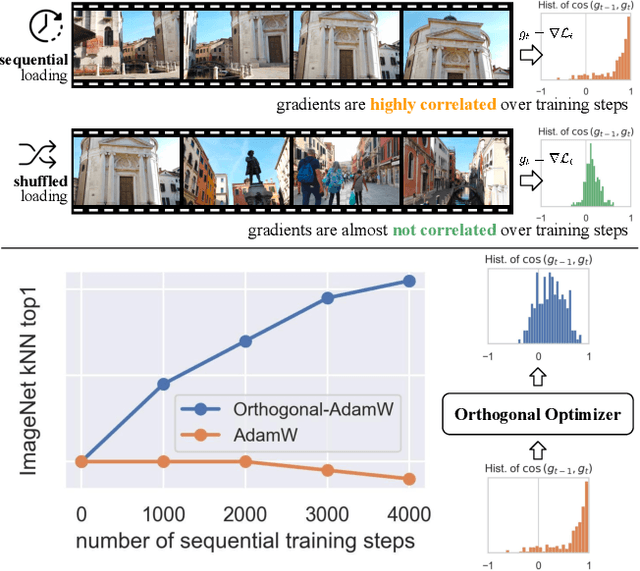
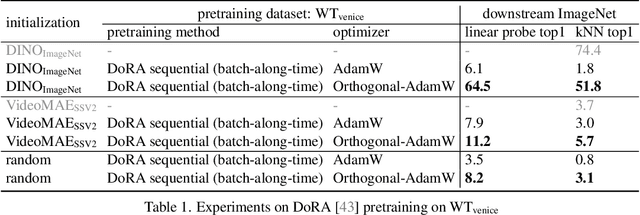
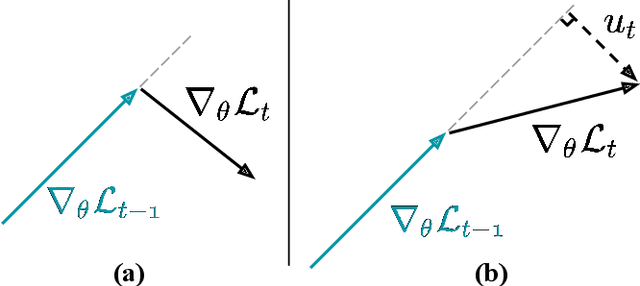
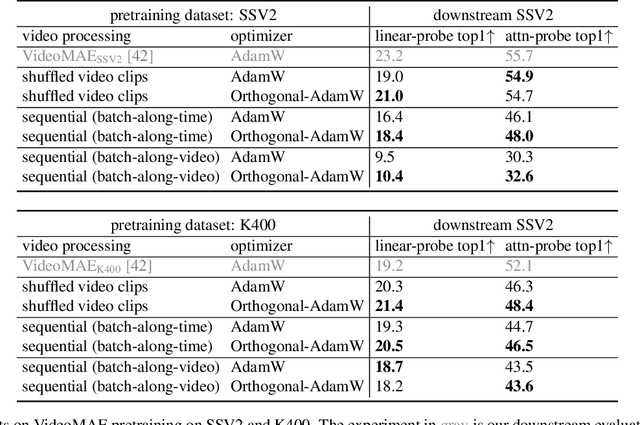
Abstract:We address the challenge of representation learning from a continuous stream of video as input, in a self-supervised manner. This differs from the standard approaches to video learning where videos are chopped and shuffled during training in order to create a non-redundant batch that satisfies the independently and identically distributed (IID) sample assumption expected by conventional training paradigms. When videos are only available as a continuous stream of input, the IID assumption is evidently broken, leading to poor performance. We demonstrate the drop in performance when moving from shuffled to sequential learning on three tasks: the one-video representation learning method DoRA, standard VideoMAE on multi-video datasets, and the task of future video prediction. To address this drop, we propose a geometric modification to standard optimizers, to decorrelate batches by utilising orthogonal gradients during training. The proposed modification can be applied to any optimizer -- we demonstrate it with Stochastic Gradient Descent (SGD) and AdamW. Our proposed orthogonal optimizer allows models trained from streaming videos to alleviate the drop in representation learning performance, as evaluated on downstream tasks. On three scenarios (DoRA, VideoMAE, future prediction), we show our orthogonal optimizer outperforms the strong AdamW in all three scenarios.
Scaling 4D Representations
Dec 19, 2024



Abstract:Scaling has not yet been convincingly demonstrated for pure self-supervised learning from video. However, prior work has focused evaluations on semantic-related tasks $\unicode{x2013}$ action classification, ImageNet classification, etc. In this paper we focus on evaluating self-supervised learning on non-semantic vision tasks that are more spatial (3D) and temporal (+1D = 4D), such as camera pose estimation, point and object tracking, and depth estimation. We show that by learning from very large video datasets, masked auto-encoding (MAE) with transformer video models actually scales, consistently improving performance on these 4D tasks, as model size increases from 20M all the way to the largest by far reported self-supervised video model $\unicode{x2013}$ 22B parameters. Rigorous apples-to-apples comparison with many recent image and video models demonstrates the benefits of scaling 4D representations.
Moving Off-the-Grid: Scene-Grounded Video Representations
Nov 08, 2024



Abstract:Current vision models typically maintain a fixed correspondence between their representation structure and image space. Each layer comprises a set of tokens arranged "on-the-grid," which biases patches or tokens to encode information at a specific spatio(-temporal) location. In this work we present Moving Off-the-Grid (MooG), a self-supervised video representation model that offers an alternative approach, allowing tokens to move "off-the-grid" to better enable them to represent scene elements consistently, even as they move across the image plane through time. By using a combination of cross-attention and positional embeddings we disentangle the representation structure and image structure. We find that a simple self-supervised objective--next frame prediction--trained on video data, results in a set of latent tokens which bind to specific scene structures and track them as they move. We demonstrate the usefulness of MooG's learned representation both qualitatively and quantitatively by training readouts on top of the learned representation on a variety of downstream tasks. We show that MooG can provide a strong foundation for different vision tasks when compared to "on-the-grid" baselines.
BootsTAP: Bootstrapped Training for Tracking-Any-Point
Feb 01, 2024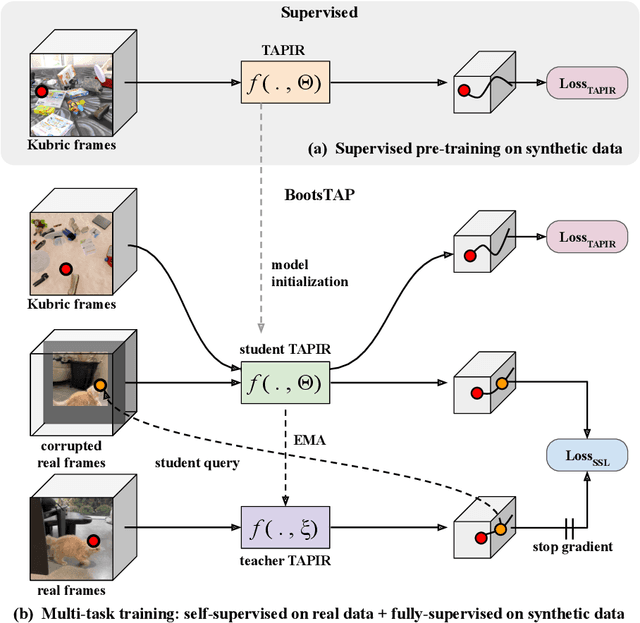
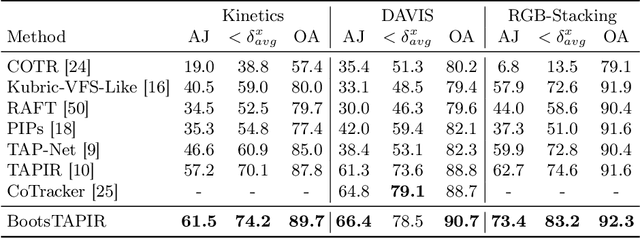
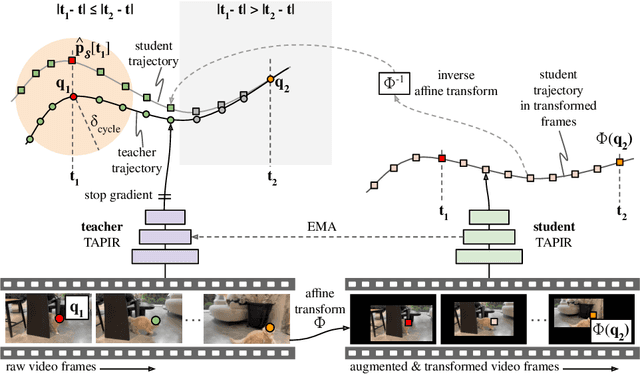

Abstract:To endow models with greater understanding of physics and motion, it is useful to enable them to perceive how solid surfaces move and deform in real scenes. This can be formalized as Tracking-Any-Point (TAP), which requires the algorithm to be able to track any point corresponding to a solid surface in a video, potentially densely in space and time. Large-scale ground-truth training data for TAP is only available in simulation, which currently has limited variety of objects and motion. In this work, we demonstrate how large-scale, unlabeled, uncurated real-world data can improve a TAP model with minimal architectural changes, using a self-supervised student-teacher setup. We demonstrate state-of-the-art performance on the TAP-Vid benchmark surpassing previous results by a wide margin: for example, TAP-Vid-DAVIS performance improves from 61.3% to 66.4%, and TAP-Vid-Kinetics from 57.2% to 61.5%.
Learning from One Continuous Video Stream
Dec 01, 2023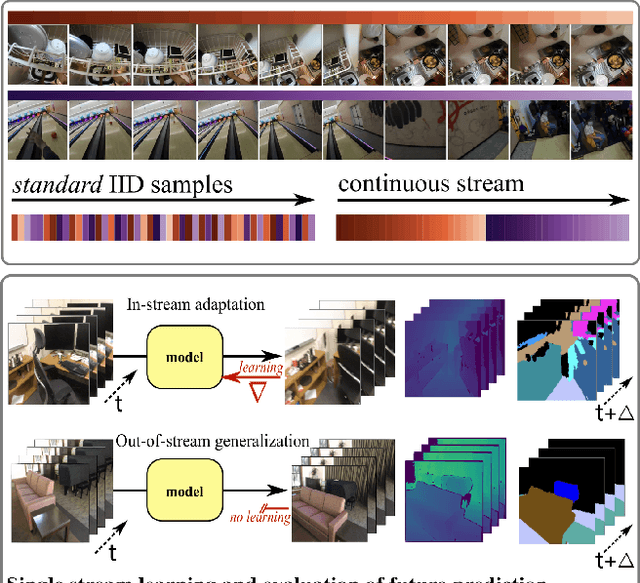

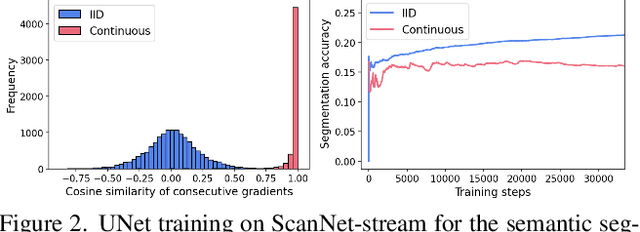

Abstract:We introduce a framework for online learning from a single continuous video stream -- the way people and animals learn, without mini-batches, data augmentation or shuffling. This poses great challenges given the high correlation between consecutive video frames and there is very little prior work on it. Our framework allows us to do a first deep dive into the topic and includes a collection of streams and tasks composed from two existing video datasets, plus methodology for performance evaluation that considers both adaptation and generalization. We employ pixel-to-pixel modelling as a practical and flexible way to switch between pre-training and single-stream evaluation as well as between arbitrary tasks, without ever requiring changes to models and always using the same pixel loss. Equipped with this framework we obtained large single-stream learning gains from pre-training with a novel family of future prediction tasks, found that momentum hurts, and that the pace of weight updates matters. The combination of these insights leads to matching the performance of IID learning with batch size 1, when using the same architecture and without costly replay buffers.
TAPIR: Tracking Any Point with per-frame Initialization and temporal Refinement
Jun 14, 2023Abstract:We present a novel model for Tracking Any Point (TAP) that effectively tracks any queried point on any physical surface throughout a video sequence. Our approach employs two stages: (1) a matching stage, which independently locates a suitable candidate point match for the query point on every other frame, and (2) a refinement stage, which updates both the trajectory and query features based on local correlations. The resulting model surpasses all baseline methods by a significant margin on the TAP-Vid benchmark, as demonstrated by an approximate 20% absolute average Jaccard (AJ) improvement on DAVIS. Our model facilitates fast inference on long and high-resolution video sequences. On a modern GPU, our implementation has the capacity to track points faster than real-time. Visualizations, source code, and pretrained models can be found on our project webpage.
Graph2Pix: A Graph-Based Image to Image Translation Framework
Aug 22, 2021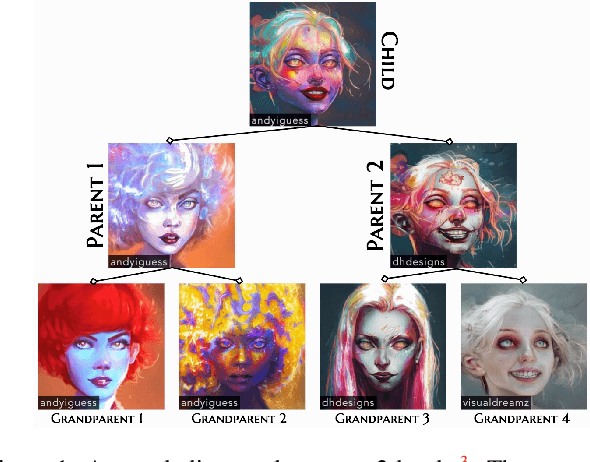
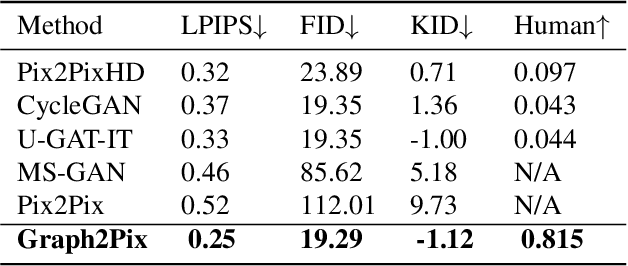

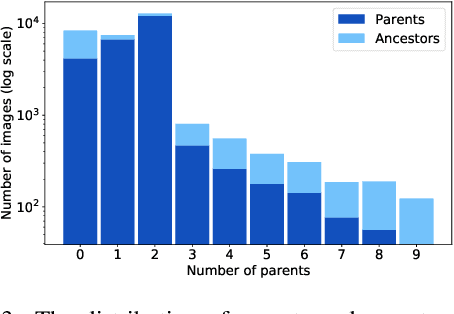
Abstract:In this paper, we propose a graph-based image-to-image translation framework for generating images. We use rich data collected from the popular creativity platform Artbreeder (http://artbreeder.com), where users interpolate multiple GAN-generated images to create artworks. This unique approach of creating new images leads to a tree-like structure where one can track historical data about the creation of a particular image. Inspired by this structure, we propose a novel graph-to-image translation model called Graph2Pix, which takes a graph and corresponding images as input and generates a single image as output. Our experiments show that Graph2Pix is able to outperform several image-to-image translation frameworks on benchmark metrics, including LPIPS (with a 25% improvement) and human perception studies (n=60), where users preferred the images generated by our method 81.5% of the time. Our source code and dataset are publicly available at https://github.com/catlab-team/graph2pix.
 Add to Chrome
Add to Chrome Add to Firefox
Add to Firefox Add to Edge
Add to Edge